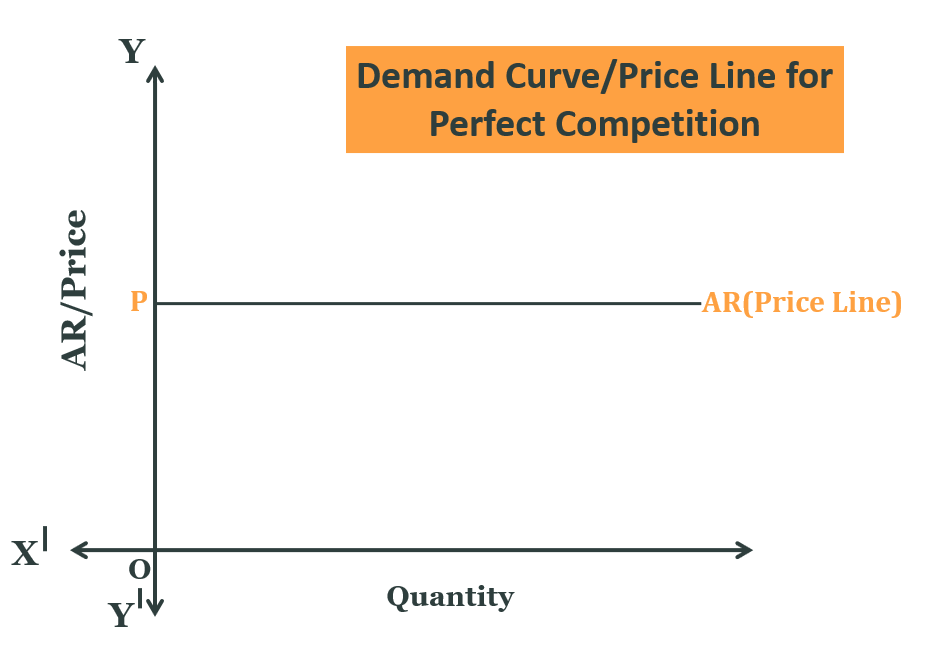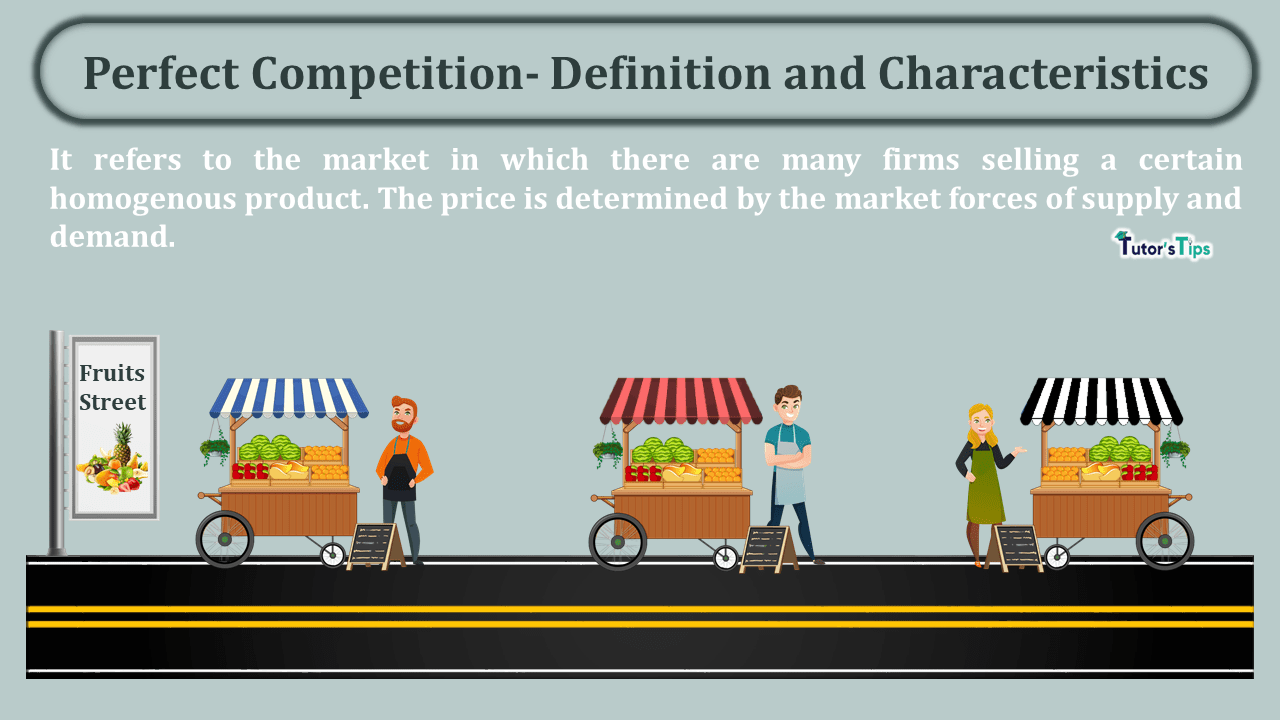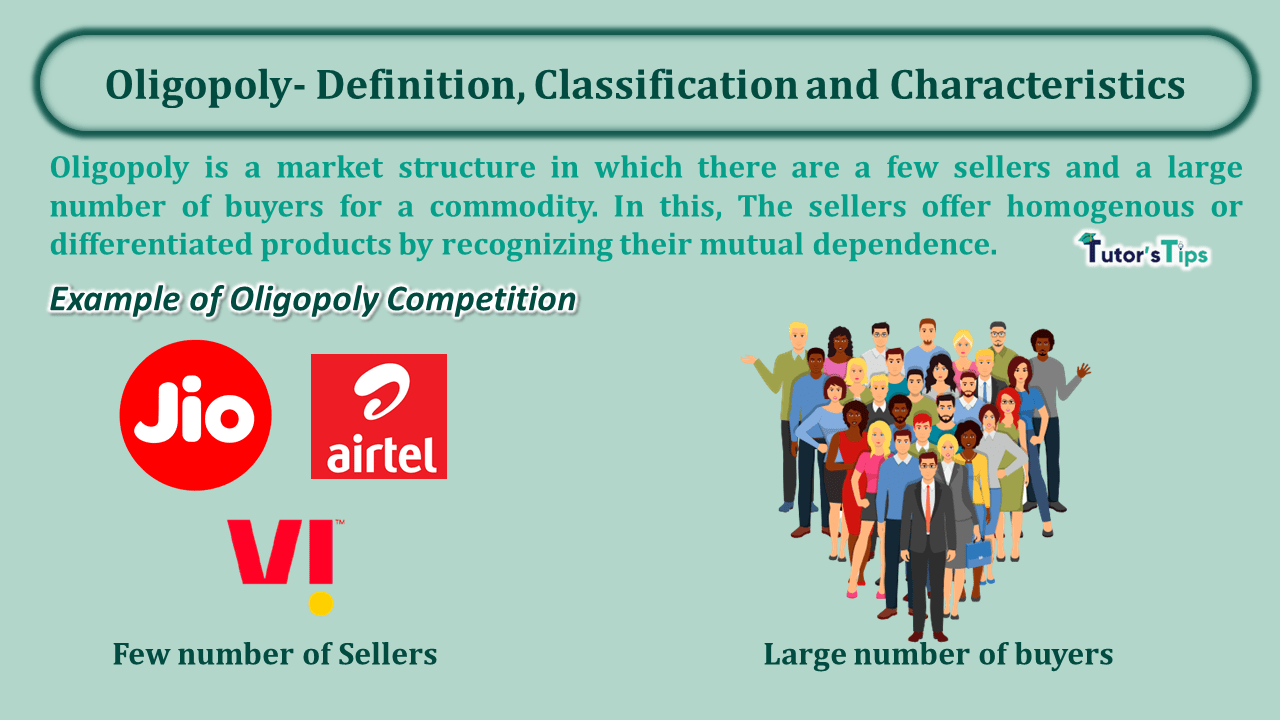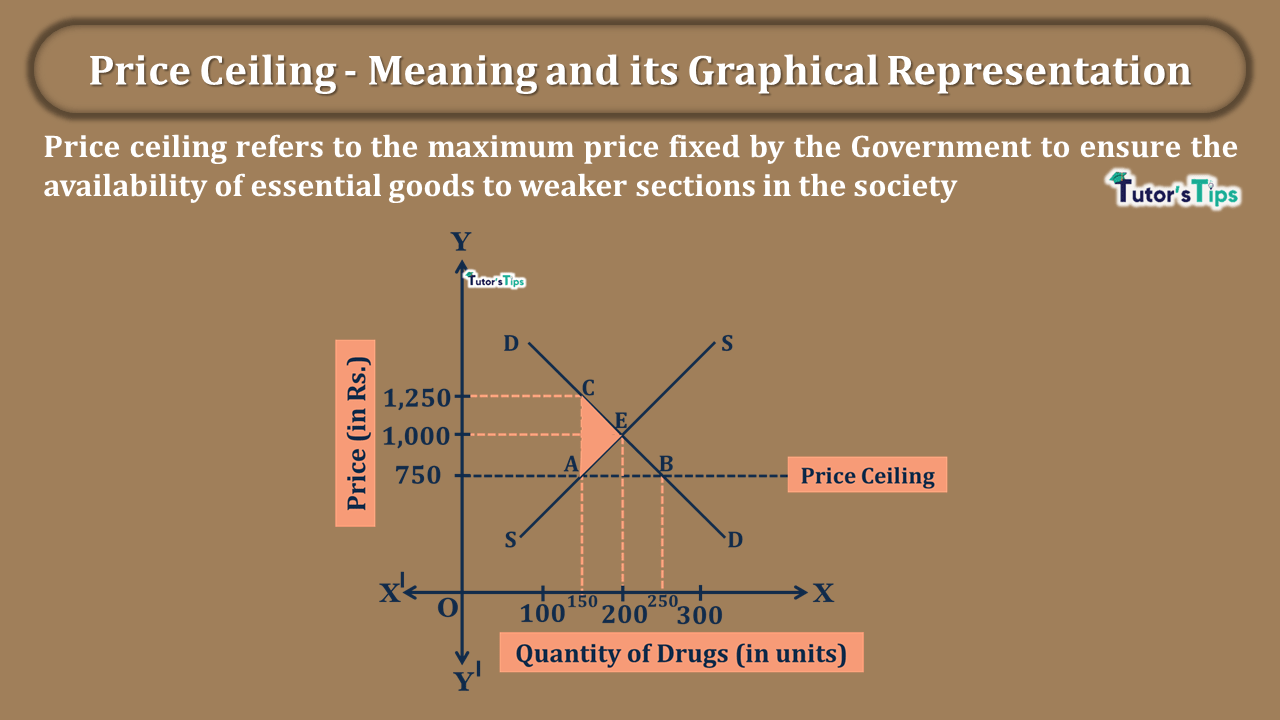Perfect Competition refers to the market in which there are many firms selling a certain homogenous product. The price is determined by the market forces of supply and demand. An individual cant control the price.
What is the Perfect Competition:
It refers to the market in which there are many firms selling a certain homogenous product.
In other words, in this type of market, there are many buyers and sellers of a homogenous product. A single firm or seller cant decide the price of the product. Consequently, the market forces like demand and supply determine the price level. Also, the individual firms or sellers are price takers in this market as they have no control over the price.
Definitions :
According to Leftwich,
“Perfect competition is a market in which there are many firms selling identical products with no firm large enough relative to the entire market to be able to influence the market price.”
According to Ferguson,
“Perfect Competition describes a market in which, there is a complete absence of direct competition among economic groups.”
In the words of Prof. Bilas,
“The perfect competition is characterized by the presence of many firms. They all sell identical products. The seller is a price taker, not price maker.”
Characteristics of Perfect Competition:
Some of the characteristics of this market are:
Advertisement-X
1) Large number of buyers and sellers:
The number of buyers and sellers in this market. But each buyer and seller is small with the entire market of a product, that by changing the quantity of product bought and sold by him. Thus, he cannot influence the price of the product. Hence, it means- No matter the demand for individual buyer increases or decreases, the market remains unaffected. Similarly, No matter the supply of individual firm increases or decreases, the market remains unaffected. Consequently, because of no change in market supply and market demand, the market price remains unaffected. It remains constant for each buyer and seller in the market. Significantly, the firm’s demand curve becomes a horizontal straight line. The following fig illustrates this situation.

2) Homogenous Product:
Under this market, all sellers sell homogenous units of a given product. A product is said to be homogenous when each unit of product is identical in all respects i.e. shape, colour, weight and size etc. When buyers find no difference between the products offered by different firms. Then, it is a situation of zero degrees of differentiation. In this situation, products are knowns as substitutes to each other. Thus, due to homogenous products, the firm has no control over the price. Also, it can be said that the firms under this market are price takers, not price makers.
3) Perfect Knowledge:
Buyers and sellers are fully aware of the price prevailing in the market. It implies that the buyers are aware of the homogeneity of products and its prices in the market and sellers are aware of the prices being paid by the buyers. Accordingly, the sellers cannot charge different prices from different buyers. Thus, the higher profit through ‘price discrimination ruled out.
4) Free entry and exit of firms:
Under this market, in long run, any new firm can enter any market and any old firm can withdraw from the industry. There is no legal or social restriction on the entry of new firms into any industry. For short-run, the time period is too short for any firm to enter and exit from the industry. Thus, the entry and exit of firms are possible only in a long period, not a short period.
5) Independent Decision making:
In this market, there is no agreement among any firms regarding the quantity to be produced or price to be charged. In other words, this market includes maximum output with minimum price.
6) Perfect mobility in Perfect competition:
Here, the factors of production are mobile. It means that they will move to that industry where they get a higher price. Accordingly, the uniform factor prices prevail in the market.
7) Lack of Transport Costs:
Buying commodity from one seller or from others doesn’t involve any extra transport cost. Further, this ensures that any producer is not able to charge higher prices for the product. Only one price prevailing in the market.
Thanks Please share with your friends
Comment if you have any questions.
References:
Advertisement-X
Introductory Microeconomics – Class 11 – CBSE (2020-21)







2 Comments